-
Report Prologue
-
Executive Summary
-
Market Introduction
-
Definition 26
-
Scope Of Study 26
-
List Of Assumptions 26
-
Market Structure 27
-
Research Methodology
-
Research Process 29
-
Primary Research 30
-
Secondary Research 31
-
Market Size Estimation 32
-
Forecast Model 32
-
Market Dynamics
-
Introduction 34
-
Drivers 35
- Increasing Preference For Minimally Invasive Procedures 35
- Rising Prevalence Of Chronic Disorders 36
- Improvement In Reimbursement Scenario 37
- Rising Geriatric Population 38
-
Restraints 39
- Rising Treatment Cost And Hospital Stay 39
- Lack Of Skilled Physicians 40
-
Opportunities 41
- New Advancements In Catheterization Devices 41
- Guide Wire Assisted Surgery In Elderly Population 41
-
Mega Trends 41
- Telemedicine 41
-
Macroeconomic Indicators 41
-
Technology Trends & Assessment 42
-
Market Factor Analysis
-
Porter’s Five Forces Model 44
- Threat Of New Entrants 44
- Bargaining Power Of Suppliers 44
- Threat Of Substitutes 45
- Bargaining Power Of Buyers 45
- Intensity Of Rivalry 45
-
Supply Chain Analysis 46
- Research &Development 46
- Manufacturing 46
- Distribution 46
- Marketing & Sales 47
- Post-Sales Monitoring 47
-
Demand & Supply: Gap Analysis 47
-
Pricing Analysis 47
-
Investment Feasibility Analysis 47
-
Global Transient Ischemic Attack Market, By Diagnosis
-
Introduction 49
-
Imaging Techniques 49
- Computed Tomography (CT) Scan 51
- Carotid Duplex Scanning 51
- Magnetic Resonance Imaging 52
- Echocardiography 52
-
Global Transient Ischemic Attack Market, By Treatment
-
Introduction 54
-
Surgery 54
-
Drugs 54
- Surgery 55
- Drugs 56
-
Global Transient Ischemic Attack Market, By Age Groups
-
Introduction 62
-
0–18 Years 62
-
19–40 Years (Millennial) 62
-
41–60 Years 62
-
60+ Years 63
- 0-18 Years 64
- 19-40 Years 65
- 41-60 Years 65
- 60+ Years 65
-
Global Transient Ischemic Attack Market, By End-User
-
Introduction 67
-
Hospitals & Clinics 67
-
Diagnostic Centers 67
-
Research Laboratories 68
- Hospitals 69
- Diagnostic Centers 70
- Research Laboratories 70
-
Global Transient Ischemic Attack Market, By Region
-
Introduction 72
-
Americas 73
- North America 78
- South America 90
-
-
Europe 94
- Western Europe 99
- Eastern Europe 127
-
Asia Pacific 131
- Asia Pacific 132
- Japan 136
- China 140
- India 144
- Australia 148
- Republic Of Korea 152
- Rest Of Asia Pacific 156
-
The Middle East & Africa 160
- Middle East And Africa 161
- United Arab Emirates 164
- Saudi Arabia 168
- Rest Of Middle East & Africa 172
-
Competitive Landscape
-
Company Market Share Analysis 177
- Introduction 177
-
Company Share Analysis 178
-
Recent Developments, 2013–2018 179
-
Company Profiles
-
Koninklijke Philips N.V. 184
- Company Overview 184
- Financial Overview 184
- Products Offering 185
- Key Developments 185
- SWOT Analysis 185
- Key Strategy 186
-
Stryker Corporation 187
- Company Overview 187
- Financial Overview 187
- Products Offering 188
- Key Developments 188
- SWOT Analysis 189
- Key Strategy 189
-
Johnson & Johnson Services Inc. 190
- Company Overview 190
- Financial Overview 190
- Products Offering 191
- Key Developments 191
- SWOT Analysis 192
- Key Strategy 192
-
Boston Scientific Corporation 193
- Company Overview 193
- Financial Overview 193
- Products Offering 194
- Key Developments 195
- SWOT Analysis 195
- Key Strategy 195
-
Sanofi 196
- Company Overview 196
- Financial Overview 196
- Products Offering 197
- Key Developments 197
- SWOT Analysis 197
- Key Strategy 197
-
Bayer AG 198
- Company Overview 198
- Financial Overview 198
- Products Offering 199
- Key Developments 199
- SWOT Analysis 199
- Key Strategy 199
-
Pfizer Inc. 200
- Company Overview 200
- Financial Overview 200
- Products Offering 201
- Key Developments 201
- SWOT Analysis 201
- Key Strategy 201
-
Siemens AG 202
- Company Overview 202
- Financial Overview 202
- Products Offering 203
- Key Developments 203
- SWOT Analysis 203
- Key Strategy 203
-
F. Hoffmann-La Roche AG 204
- Company Overview 204
- Financial Overview 204
- Products Offering 205
- Key Developments 205
- SWOT Analysis 205
- Key Strategy 205
-
GE Healthcare 206
- Company Overview 206
- Financial Overview 206
- Products Offering 207
- Key Developments 207
- SWOT Analysis 207
- Key Strategy 207
-
Penumbra, Inc. 208
- Company Overview 208
- Financial Overview 208
- Products Offering 209
- Key Developments 209
- SWOT Analysis 209
- Key Strategy 210
-
Medtronic PLC 211
- Company Overview 211
- Financial Overview 211
- Products Offering 212
- Key Developments 212
- SWOT Analysis 212
- Key Strategy 213
-
Abbott Laboratories 214
- Company Overview 214
- Financial Overview 214
- Products Offering 215
- Key Developments 215
- SWOT Analysis 216
- Key Strategy 216
-
Merck & Co., Inc. 217
- Company Overview 217
- Financial Overview 217
- Products Offering 218
- Key Developments 218
- SWOT Analysis 218
- Key Strategy 218
-
Boehringer Ingelheim GmbH 219
- Company Overview 219
- Financial Overview 219
- Products Offering 220
- Key Developments 220
- SWOT Analysis 220
- Key Strategy 220
-
Conclusion
-
Key Findings 222
- CEO’s Viewpoint 222
- Unmet Needs 222
- Key Companies To Watch 222
- Prediction 222
-
Appendix
-
Discussion Blue Print 224
-
References 225
-
List Of Tables
-
MARKET SYNOPSIS 24
-
LIST OF ASSUMPTIONS 26
-
PRIMARY INTERVIEWS 30
-
GLOBAL TRANSIENT ISCHEMIC ATTACK MARKET, BY DIAGNOSIS, 2020–2027 (USD MILLION) 50
-
GLOBAL TRANSIENT ISCHEMIC ATTACK MARKET FOR DIAGNOSIS, BY IMAGING TECHNIQUES, 2020–2027 (USD MILLION) 50
-
GLOBAL TRANSIENT ISCHEMIC ATTACK MARKET FOR IMAGING TECHNIQUES, BY COMPUTED TOMOGRAPHY (CT) SCAN,
-
GLOBAL TRANSIENT ISCHEMIC ATTACK MARKET FOR IMAGING TECHNIQUES, BY CAROTID DUPLEX SCANNING,
-
GLOBAL TRANSIENT ISCHEMIC ATTACK MARKET FOR IMAGING TECHNIQUES, BY MAGNETIC RESONANCE IMAGING,
-
GLOBAL TRANSIENT ISCHEMIC ATTACK MARKET FOR IMAGING TECHNIQUES, BY ECHOCARDIOGRAPHY,
-
GLOBAL TRANSIENT ISCHEMIC ATTACK MARKET, BY TREATMENT, 2020–2027 (USD MILLION) 55
-
GLOBAL TRANSIENT ISCHEMIC ATTACK MARKET FOR TREATMENT, BY SURGERY, 2020–2027 (USD MILLION) 55
-
GLOBAL TRANSIENT ISCHEMIC ATTACK MARKET FOR TREATMENT, BY DRUGS, 2020–2027 (USD MILLION) 56
-
GLOBAL TRANSIENT ISCHEMIC ATTACK MARKET FOR DRUG, BY ANTITHROMBOTIC AGENTS, 2020–2027 (USD MILLION) 56
-
GLOBAL TRANSIENT ISCHEMIC ATTACK MARKET FOR ANTITHROMBOTIC AGENTS, BY ANTIPLATELETS,
-
GLOBAL TRANSIENT ISCHEMIC ATTACK MARKET FOR ANTIPLATELETS, BY CLOPIDOGREL, 2020–2027 (USD MILLION) 57
-
GLOBAL TRANSIENT ISCHEMIC ATTACK MARKET FOR ANTIPLATELETS, BY ASPIRIN, 2020–2027 (USD MILLION) 57
-
GLOBAL TRANSIENT ISCHEMIC ATTACK MARKET FOR ANTITHROMBOTIC AGENTS, BY HEPARINS, 2020–2027 (USD MILLION) 57
-
GLOBAL TRANSIENT ISCHEMIC ATTACK MARKET FOR HEPARINS, BY ENOXAPARIN, 2020–2027 (USD MILLION) 58
-
GLOBAL TRANSIENT ISCHEMIC ATTACK MARKET FOR HEPARINS, BY DALTEPARIN, 2020–2027 (USD MILLION) 58
-
GLOBAL TRANSIENT ISCHEMIC ATTACK MARKET FOR ANTITHROMBOTIC AGENTS, BY FIBRINOLYTICS,
-
GLOBAL TRANSIENT ISCHEMIC ATTACK MARKET FOR FIBRINOLYTICS, BY TENECTEPLASE, 2020–2027 (USD MILLION) 59
-
GLOBAL TRANSIENT ISCHEMIC ATTACK MARKET FOR FIBRINOLYTICS, BY ALTEPLASE 2020–2027 (USD MILLION) 59
-
GLOBAL TRANSIENT ISCHEMIC ATTACK MARKET FOR DRUGS, BY ANTIHYPERTENSIVE AGENTS, 2020–2027 (USD MILLION) 59
-
GLOBAL TRANSIENT ISCHEMIC ATTACK MARKET FOR ANTIHYPERTENSIVE AGENTS, BY PRAZOSIN,
-
GLOBAL TRANSIENT ISCHEMIC ATTACK MARKET FOR ANTIHYPERTENSIVE AGENTS, BY MOXONIDINE,
-
GLOBAL TRANSIENT ISCHEMIC ATTACK MARKET, BY AGE GROUPS, 2020–2027 (USD MILLION) 63
-
GLOBAL TRANSIENT ISCHEMIC ATTACK MARKET FOR AGE GROUP, BY 0-18 YEARS, 2020–2027 (USD MILLION) 64
-
GLOBAL TRANSIENT ISCHEMIC ATTACK MARKET FOR AGE GROUP, BY 19-40 YEARS, 2020–2027 (USD MILLION) 65
-
GLOBAL TRANSIENT ISCHEMIC ATTACK MARKET FOR AGE GROUP, BY 41-60 YEARS, 2020–2027 (USD MILLION) 65
-
GLOBAL TRANSIENT ISCHEMIC ATTACK MARKET FOR AGE GROUP, BY 60+ YEARS, 2020–2027 (USD MILLION) 65
-
GLOBAL TRANSIENT ISCHEMIC ATTACK MARKET, BY END-USER, 2020–2027 (USD MILLION) 68
-
GLOBAL TRANSIENT ISCHEMIC ATTACK MARKET FOR HOSPITALS, BY REGION, 2020–2027 (USD MILLION) 69
-
GLOBAL TRANSIENT ISCHEMIC ATTACK MARKET FOR DIAGNOSTIC CENTERS, BY REGION, 2020–2027 (USD MILLION) 70
-
GLOBAL TRANSIENT ISCHEMIC ATTACK MARKET FOR RESEARCH LABORATORIES, BY REGION, 2020–2027 (USD MILLION) 70
-
GLOBAL TRANSIENT ISCHEMIC ATTACK MARKET, BY REGION, 2020–2027 (USD MILLION) 72
-
AMERICAS TRANSIENT ISCHEMIC ATTACK MARKET, BY REGION, 2020–2027 (USD MILLION) 73
-
AMERICAS TRANSIENT ISCHEMIC ATTACK MARKET, BY DIAGNOSIS, 2020–2027 (USD MILLION) 74
-
AMERICAS TRANSIENT ISCHEMIC ATTACK MARKET FOR DIAGNOSIS, BY IMAGING TECHNIQUE, 2020–2027 (USD MILLION) 74
-
AMERICAS TRANSIENT ISCHEMIC ATTACK MARKET BY TREATMENT,, 2020–2027 (USD MILLION) 74
-
AMERICAS TRANSIENT ISCHEMIC ATTACK MARKET FOR TREATMENT, BY DRUGS, 2020–2027 (USD MILLION) 75
-
AMERICAS TRANSIENT ISCHEMIC ATTACK MARKET FOR DRUGS, BY ANTITHROMBOTIC AGENTS, 2020–2027 (USD MILLION) 75
-
AMERICAS TRANSIENT ISCHEMIC ATTACK MARKET FOR ANTITHROMBOTIC AGENTS, BY ANTIPLATELETS,
-
AMERICAS TRANSIENT ISCHEMIC ATTACK MARKET FOR ANTITHROMBOTIC AGENTS, BY HEPARINS,
-
AMERICAS TRANSIENT ISCHEMIC ATTACK MARKET FOR ANTITHROMBOTIC AGENTS, BY FIBRINOLYTICS,
-
AMERICAS TRANSIENT ISCHEMIC ATTACK MARKET FOR DRUGS, BY ANTIHYPERTENSIVE AGENTS, 2020–2027 (USD MILLION) 76
-
AMERICAS TRANSIENT ISCHEMIC ATTACK MARKET, BY AGE GROUP, 2020–2027 (USD MILLION) 77
-
AMERICAS TRANSIENT ISCHEMIC ATTACK MARKET, BY END-USER, 2020–2027 (USD MILLION) 77
-
NORTH AMERICA: TRANSIENT ISCHEMIC ATTACK MARKET, BY COUNTRY, 2020-2027 (USD MILLION) 78
-
NORTH AMERICA TRANSIENT ISCHEMIC ATTACK MARKET, BY DIAGNOSIS, 2020–2027 (USD MILLION) 78
-
NORTH AMERICA TRANSIENT ISCHEMIC ATTACK MARKET FOR DIAGNOSIS, BY IMAGING TECHNIQUE,
-
NORTH AMERICA TRANSIENT ISCHEMIC ATTACK MARKET BY TREATMENT, 2020–2027 (USD MILLION) 79
-
NORTH AMERICA TRANSIENT ISCHEMIC ATTACK MARKET FOR TREATMENT, BY DRUGS, 2020–2027 (USD MILLION) 79
-
NORTH AMERICA TRANSIENT ISCHEMIC ATTACK MARKET FOR DRUGS, BY ANTITHROMBOTIC AGENTS,
-
NORTH AMERICA TRANSIENT ISCHEMIC ATTACK MARKET FOR ANTITHROMBOTIC AGENTS, BY ANTIPLATELETS,
-
NORTH AMERICA TRANSIENT ISCHEMIC ATTACK MARKET FOR ANTITHROMBOTIC AGENTS, BY HEPARINS,
-
NORTH AMERICA TRANSIENT ISCHEMIC ATTACK MARKET FOR ANTITHROMBOTIC AGENTS, BY FIBRINOLYTICS,
-
NORTH AMERICA TRANSIENT ISCHEMIC ATTACK MARKET FOR DRUGS, BY ANTIHYPERTENSIVE AGENTS,
-
NORTH AMERICA TRANSIENT ISCHEMIC ATTACK MARKET, BY AGE GROUP, 2020–2027 (USD MILLION) 81
-
NORTH AMERICA TRANSIENT ISCHEMIC ATTACK MARKET, BY END-USER, 2020–2027 (USD MILLION) 82
-
U.S. TRANSIENT ISCHEMIC ATTACK MARKET, BY DIAGNOSIS, 2020–2027 (USD MILLION) 82
-
U.S. TRANSIENT ISCHEMIC ATTACK MARKET FOR DIAGNOSIS, BY IMAGING TECHNIQUE, 2020–2027 (USD MILLION) 82
-
U.S. TRANSIENT ISCHEMIC ATTACK MARKET BY TREATMENT,, 2020–2027 (USD MILLION) 83
-
U.S. TRANSIENT ISCHEMIC ATTACK MARKET FOR TREATMENT, BY DRUGS, 2020–2027 (USD MILLION) 83
-
U.S. TRANSIENT ISCHEMIC ATTACK MARKET FOR DRUGS, BY ANTITHROMBOTIC AGENTS 2020–2027 (USD MILLION) 83
-
U.S. TRANSIENT ISCHEMIC ATTACK MARKET FOR ANTITHROMBOTIC AGENTS, BY ANTIPLATELETS,
-
U.S. TRANSIENT ISCHEMIC ATTACK MARKET FOR ANTITHROMBOTIC AGENTS, BY HEPARINS, 2020–2027 (USD MILLION) 84
-
U.S. TRANSIENT ISCHEMIC ATTACK MARKET FOR ANTITHROMBOTIC AGENTS, BY FIBRINOLYTICS,
-
U.S. TRANSIENT ISCHEMIC ATTACK MARKET FOR DRUGS, BY ANTIHYPERTENSIVE AGENTS, 2020–2027 (USD MILLION) 85
-
U.S. TRANSIENT ISCHEMIC ATTACK MARKET, BY AGE GROUP, 2020–2027 (USD MILLION) 85
-
U.S. TRANSIENT ISCHEMIC ATTACK MARKET, BY END-USER, 2020–2027 (USD MILLION) 85
-
CANADA TRANSIENT ISCHEMIC ATTACK MARKET, BY DIAGNOSIS, 2020–2027 (USD MILLION) 86
-
CANADA TRANSIENT ISCHEMIC ATTACK MARKET FOR DIAGNOSIS, BY IMAGING TECHNIQUE, 2020–2027 (USD MILLION) 86
-
CANADA TRANSIENT ISCHEMIC ATTACK MARKET BY TREATMENT,, 2020–2027 (USD MILLION) 86
-
CANADA TRANSIENT ISCHEMIC ATTACK MARKET FOR TREATMENT, BY DRUGS, 2020–2027 (USD MILLION) 87
-
CANADA TRANSIENT ISCHEMIC ATTACK MARKET FOR DRUGS, BY ANTITHROMBOTIC AGENTS, 2020–2027 (USD MILLION) 87
-
CANADA TRANSIENT ISCHEMIC ATTACK MARKET FOR ANTITHROMBOTIC AGENTS, BY ANTIPLATELETS,
-
CANADA TRANSIENT ISCHEMIC ATTACK MARKET FOR ANTITHROMBOTIC AGENTS, BY HEPARINS, 2020–2027 (USD MILLION) 88
-
CANADA TRANSIENT ISCHEMIC ATTACK MARKET FOR ANTITHROMBOTIC AGENTS, BY FIBRINOLYTICS,
-
CANADA TRANSIENT ISCHEMIC ATTACK MARKET FOR DRUGS, BY ANTIHYPERTENSIVE AGENTS, 2020–2027 (USD MILLION) 88
-
CANADA TRANSIENT ISCHEMIC ATTACK MARKET, BY AGE GROUP, 2020–2027 (USD MILLION) 89
-
CANADA TRANSIENT ISCHEMIC ATTACK MARKET, BY END-USER, 2020–2027 (USD MILLION) 89
-
SOUTH AMERICA TRANSIENT ISCHEMIC ATTACK MARKET, BY DIAGNOSIS, 2020–2027 (USD MILLION) 90
-
SOUTH AMERICA TRANSIENT ISCHEMIC ATTACK MARKET FOR DIAGNOSIS, BY IMAGING TECHNIQUE,
-
SOUTH AMERICA TRANSIENT ISCHEMIC ATTACK MARKET BY TREATMENT, 2020–2027 (USD MILLION) 90
-
SOUTH AMERICA TRANSIENT ISCHEMIC ATTACK MARKET FOR TREATMENT, BY DRUGS, 2020–2027 (USD MILLION) 91
-
SOUTH AMERICA TRANSIENT ISCHEMIC ATTACK MARKET FOR DRUGS, BY ANTITHROMBOTIC AGENTS,
-
SOUTH AMERICA TRANSIENT ISCHEMIC ATTACK MARKET FOR ANTITHROMBOTIC AGENTS, BY ANTIPLATELETS,
-
SOUTH AMERICA TRANSIENT ISCHEMIC ATTACK MARKET FOR ANTITHROMBOTIC AGENTS, BY HEPARINS,
-
SOUTH AMERICA TRANSIENT ISCHEMIC ATTACK MARKET FOR ANTITHROMBOTIC AGENTS, BY FIBRINOLYTICS,
-
SOUTH AMERICA TRANSIENT ISCHEMIC ATTACK MARKET FOR DRUGS, BY ANTIHYPERTENSIVE AGENTS,
-
SOUTH AMERICA TRANSIENT ISCHEMIC ATTACK MARKET, BY AGE GROUP, 2020–2027 (USD MILLION) 93
-
SOUTH AMERICA TRANSIENT ISCHEMIC ATTACK MARKET, BY END-USER, 2020–2027 (USD MILLION) 93
-
EUROPE TRANSIENT ISCHEMIC ATTACK MARKET, BY COUNTRY, 2020–2027 (USD MILLION) 94
-
EUROPE TRANSIENT ISCHEMIC ATTACK MARKET, BY DIAGNOSIS, 2020–2027 (USD MILLION) 95
-
EUROPE TRANSIENT ISCHEMIC ATTACK MARKET FOR DIAGNOSIS, BY IMAGING TECHNIQUE, 2020–2027 (USD MILLION) 95
-
EUROPE TRANSIENT ISCHEMIC ATTACK MARKET BY TREATMENT,, 2020–2027 (USD MILLION) 95
-
EUROPE TRANSIENT ISCHEMIC ATTACK MARKET FOR TREATMENT, BY DRUGS, 2020–2027 (USD MILLION) 96
-
EUROPE TRANSIENT ISCHEMIC ATTACK MARKET FOR DRUGS, BY ANTITHROMBOTIC AGENTS, 2020–2027 (USD MILLION) 96
-
EUROPE TRANSIENT ISCHEMIC ATTACK MARKET FOR ANTITHROMBOTIC AGENTS, BY ANTIPLATELETS,
-
EUROPE TRANSIENT ISCHEMIC ATTACK MARKET FOR ANTITHROMBOTIC AGENTS, BY HEPARINS, 2020–2027 (USD MILLION) 97
-
EUROPE TRANSIENT ISCHEMIC ATTACK MARKET FOR ANTITHROMBOTIC AGENTS, BY FIBRINOLYTICS,
-
EUROPE TRANSIENT ISCHEMIC ATTACK MARKET FOR DRUGS, BY ANTIHYPERTENSIVE AGENTS, 2020–2027 (USD MILLION) 97
-
EUROPE TRANSIENT ISCHEMIC ATTACK MARKET, BY AGE GROUP, 2020–2027 (USD MILLION) 98
-
EUROPE TRANSIENT ISCHEMIC ATTACK MARKET, BY END-USER, 2020–2027 (USD MILLION) 98
-
WESTERN EUROPE TRANSIENT ISCHEMIC ATTACK MARKET, BY DIAGNOSIS, 2020–2027 (USD MILLION) 99
-
WESTERN EUROPE TRANSIENT ISCHEMIC ATTACK MARKET FOR DIAGNOSIS, BY IMAGING TECHNIQUE,
-
WESTERN EUROPE TRANSIENT ISCHEMIC ATTACK MARKET BY TREATMENT, 2020–2027 (USD MILLION) 99
-
WESTERN EUROPE TRANSIENT ISCHEMIC ATTACK MARKET FOR TREATMENT, BY DRUGS, 2020–2027 (USD MILLION) 100
-
WESTERN EUROPE TRANSIENT ISCHEMIC ATTACK MARKET FOR DRUGS, BY ANTITHROMBOTIC AGENTS,
-
WESTERN EUROPE TRANSIENT ISCHEMIC ATTACK MARKET FOR ANTITHROMBOTIC AGENTS, BY ANTIPLATELETS,
-
WESTERN EUROPE TRANSIENT ISCHEMIC ATTACK MARKET FOR ANTITHROMBOTIC AGENTS, BY HEPARINS,
-
WESTERN EUROPE TRANSIENT ISCHEMIC ATTACK MARKET FOR ANTITHROMBOTIC AGENTS, BY FIBRINOLYTICS,
-
WESTERN EUROPE TRANSIENT ISCHEMIC ATTACK MARKET FOR DRUGS, BY ANTIHYPERTENSIVE AGENTS,
-
WESTERN EUROPE TRANSIENT ISCHEMIC ATTACK MARKET, BY AGE GROUP, 2020–2027 (USD MILLION) 102
-
WESTERN EUROPE TRANSIENT ISCHEMIC ATTACK MARKET, BY END-USER, 2020–2027 (USD MILLION) 102
-
GERMANY TRANSIENT ISCHEMIC ATTACK MARKET, BY DIAGNOSIS, 2020–2027 (USD MILLION) 103
-
GERMANY TRANSIENT ISCHEMIC ATTACK MARKET FOR DIAGNOSIS, BY IMAGING TECHNIQUE, 2020–2027 (USD MILLION) 103
-
GERMANY TRANSIENT ISCHEMIC ATTACK MARKET BY TREATMENT, 2020–2027 (USD MILLION) 103
-
GERMANY TRANSIENT ISCHEMIC ATTACK MARKET FOR TREATMENT, BY DRUGS, 2020–2027 (USD MILLION) 104
-
GERMANY TRANSIENT ISCHEMIC ATTACK MARKET FOR DRUGS, BY ANTITHROMBOTIC AGENTS, 2020–2027 (USD MILLION) 104
-
GERMANY TRANSIENT ISCHEMIC ATTACK MARKET FOR ANTITHROMBOTIC AGENTS, BY ANTIPLATELETS,
-
GERMANY TRANSIENT ISCHEMIC ATTACK MARKET FOR ANTITHROMBOTIC AGENTS, BY HEPARINS,
-
GERMANY TRANSIENT ISCHEMIC ATTACK MARKET FOR ANTITHROMBOTIC AGENTS, BY FIBRINOLYTICS,
-
GERMANY TRANSIENT ISCHEMIC ATTACK MARKET FOR DRUGS, BY ANTIHYPERTENSIVE AGENTS, 2020–2027 (USD MILLION) 105
-
GERMANY TRANSIENT ISCHEMIC ATTACK MARKET, BY AGE GROUP, 2020–2027 (USD MILLION) 106
-
GERMANY TRANSIENT ISCHEMIC ATTACK MARKET, BY END-USER, 2020–2027 (USD MILLION) 106
-
FRANCE TRANSIENT ISCHEMIC ATTACK MARKET, BY DIAGNOSIS, 2020–2027 (USD MILLION) 107
-
FRANCE TRANSIENT ISCHEMIC ATTACK MARKET FOR DIAGNOSIS, BY IMAGING TECHNIQUE, 2020–2027 (USD MILLION) 107
-
FRANCE TRANSIENT ISCHEMIC ATTACK MARKET BY TREATMENT, 2020–2027 (USD MILLION) 107
-
FRANCE TRANSIENT ISCHEMIC ATTACK MARKET FOR TREATMENT, BY DRUGS, 2020–2027 (USD MILLION) 108
-
FRANCE TRANSIENT ISCHEMIC ATTACK MARKET FOR DRUGS, BY ANTITHROMBOTIC AGENTS, 2020–2027 (USD MILLION) 108
-
FRANCE TRANSIENT ISCHEMIC ATTACK MARKET FOR ANTITHROMBOTIC AGENTS, BY ANTIPLATELETS,
-
FRANCE TRANSIENT ISCHEMIC ATTACK MARKET FOR ANTITHROMBOTIC AGENTS, BY HEPARINS, 2020–2027 (USD MILLION) 109
-
FRANCE TRANSIENT ISCHEMIC ATTACK MARKET FOR ANTITHROMBOTIC AGENTS, BY FIBRINOLYTICS,
-
FRANCE TRANSIENT ISCHEMIC ATTACK MARKET FOR DRUGS, BY ANTIHYPERTENSIVE AGENTS, 2020–2027 (USD MILLION) 109
-
FRANCE TRANSIENT ISCHEMIC ATTACK MARKET, BY AGE GROUP, 2020–2027 (USD MILLION) 110
-
FRANCE TRANSIENT ISCHEMIC ATTACK MARKET, BY END-USER, 2020–2027 (USD MILLION) 110
-
U.K TRANSIENT ISCHEMIC ATTACK MARKET, BY DIAGNOSIS, 2020–2027 (USD MILLION) 111
-
U.K TRANSIENT ISCHEMIC ATTACK MARKET FOR DIAGNOSIS, BY IMAGING TECHNIQUE, 2020–2027 (USD MILLION) 111
-
U.K TRANSIENT ISCHEMIC ATTACK MARKET BY TREATMENT,, 2020–2027 (USD MILLION) 111
-
U.K TRANSIENT ISCHEMIC ATTACK MARKET FOR TREATMENT, BY DRUGS, 2020–2027 (USD MILLION) 112
-
U.K TRANSIENT ISCHEMIC ATTACK MARKET FOR DRUGS, BY ANTITHROMBOTIC AGENTS, 2020–2027 (USD MILLION) 112
-
U.K TRANSIENT ISCHEMIC ATTACK MARKET FOR ANTITHROMBOTIC AGENTS, BY ANTIPLATELETS, 2020–2027 (USD MILLION) 112
-
U.K TRANSIENT ISCHEMIC ATTACK MARKET FOR ANTITHROMBOTIC AGENTS, BY HEPARINS, 2020–2027 (USD MILLION) 113
-
U.K TRANSIENT ISCHEMIC ATTACK MARKET FOR ANTITHROMBOTIC AGENTS, BY FIBRINOLYTICS, 2020–2027 (USD MILLION) 113
-
U.K TRANSIENT ISCHEMIC ATTACK MARKET FOR DRUGS, BY ANTIHYPERTENSIVE AGENTS, 2020–2027 (USD MILLION) 113
-
U.K TRANSIENT ISCHEMIC ATTACK MARKET, BY AGE GROUP, 2020–2027 (USD MILLION) 114
-
U.K TRANSIENT ISCHEMIC ATTACK MARKET, BY END-USER, 2020–2027 (USD MILLION) 114
-
ITALY TRANSIENT ISCHEMIC ATTACK MARKET, BY DIAGNOSIS, 2020–2027 (USD MILLION) 115
-
ITALY TRANSIENT ISCHEMIC ATTACK MARKET FOR DIAGNOSIS, BY IMAGING TECHNIQUE, 2020–2027 (USD MILLION) 115
-
ITALY TRANSIENT ISCHEMIC ATTACK MARKET BY TREATMENT, 2020–2027 (USD MILLION) 115
-
ITALY TRANSIENT ISCHEMIC ATTACK MARKET FOR TREATMENT, BY DRUGS, 2020–2027 (USD MILLION) 116
-
ITALY TRANSIENT ISCHEMIC ATTACK MARKET FOR DRUGS, BY ANTITHROMBOTIC AGENTS 2020–2027 (USD MILLION) 116
-
ITALY TRANSIENT ISCHEMIC ATTACK MARKET FOR ANTITHROMBOTIC AGENTS, BY ANTIPLATELETS,
-
ITALY TRANSIENT ISCHEMIC ATTACK MARKET FOR ANTITHROMBOTIC AGENTS, BY HEPARINS, 2020–2027 (USD MILLION) 117
-
ITALY TRANSIENT ISCHEMIC ATTACK MARKET FOR ANTITHROMBOTIC AGENTS, BY FIBRINOLYTICS,
-
ITALY TRANSIENT ISCHEMIC ATTACK MARKET FOR DRUGS, BY ANTIHYPERTENSIVE AGENTS, 2020–2027 (USD MILLION) 117
-
ITALY TRANSIENT ISCHEMIC ATTACK MARKET, BY AGE GROUP, 2020–2027 (USD MILLION) 118
-
ITALY TRANSIENT ISCHEMIC ATTACK MARKET, BY END-USER, 2020–2027 (USD MILLION) 118
-
SPAIN TRANSIENT ISCHEMIC ATTACK MARKET, BY DIAGNOSIS, 2020–2027 (USD MILLION) 119
-
SPAIN TRANSIENT ISCHEMIC ATTACK MARKET FOR DIAGNOSIS, BY IMAGING TECHNIQUE, 2020–2027 (USD MILLION) 119
-
SPAIN TRANSIENT ISCHEMIC ATTACK MARKET BY TREATMENT,, 2020–2027 (USD MILLION) 119
-
SPAIN TRANSIENT ISCHEMIC ATTACK MARKET FOR TREATMENT, BY DRUGS, 2020–2027 (USD MILLION) 120
-
SPAIN TRANSIENT ISCHEMIC ATTACK MARKET FOR DRUGS, BY ANTITHROMBOTIC AGENTS, 2020–2027 (USD MILLION) 120
-
SPAIN TRANSIENT ISCHEMIC ATTACK MARKET FOR ANTITHROMBOTIC AGENTS, BY ANTIPLATELETS,
-
SPAIN TRANSIENT ISCHEMIC ATTACK MARKET FOR ANTITHROMBOTIC AGENTS, BY HEPARINS, 2020–2027 (USD MILLION) 121
-
SPAIN TRANSIENT ISCHEMIC ATTACK MARKET FOR ANTITHROMBOTIC AGENTS, BY FIBRINOLYTICS,
-
SPAIN TRANSIENT ISCHEMIC ATTACK MARKET FOR DRUGS, BY ANTIHYPERTENSIVE AGENTS, 2020–2027 (USD MILLION) 121
-
SPAIN TRANSIENT ISCHEMIC ATTACK MARKET, BY AGE GROUP, 2020–2027 (USD MILLION) 122
-
SPAIN TRANSIENT ISCHEMIC ATTACK MARKET, BY END-USER, 2020–2027 (USD MILLION) 122
-
REST OF WESTERN EUROPE TRANSIENT ISCHEMIC ATTACK MARKET, BY DIAGNOSIS, 2020–2027 (USD MILLION) 123
-
REST OF WESTERN EUROPE TRANSIENT ISCHEMIC ATTACK MARKET FOR DIAGNOSIS, BY IMAGING TECHNIQUE,
-
REST OF WESTERN EUROPE TRANSIENT ISCHEMIC ATTACK MARKET BY TREATMENT, 2020–2027 (USD MILLION) 123
-
REST OF WESTERN EUROPE TRANSIENT ISCHEMIC ATTACK MARKET FOR TREATMENT, BY DRUGS, 2020–2027 (USD MILLION) 124
-
REST OF WESTERN EUROPE TRANSIENT ISCHEMIC ATTACK MARKET FOR DRUGS, BY ANTITHROMBOTIC AGENTS,
-
REST OF WESTERN EUROPE TRANSIENT ISCHEMIC ATTACK MARKET FOR ANTITHROMBOTIC AGENTS, BY ANTIPLATELETS,
-
REST OF WESTERN EUROPE TRANSIENT ISCHEMIC ATTACK MARKET FOR ANTITHROMBOTIC AGENTS, BY HEPARINS,
-
REST OF WESTERN EUROPE TRANSIENT ISCHEMIC ATTACK MARKET FOR ANTITHROMBOTIC AGENTS, BY FIBRINOLYTICS,
-
REST OF WESTERN EUROPE TRANSIENT ISCHEMIC ATTACK MARKET FOR DRUGS, BY ANTIHYPERTENSIVE AGENTS,
-
REST OF WESTERN EUROPE TRANSIENT ISCHEMIC ATTACK MARKET, BY AGE GROUP, 2020–2027 (USD MILLION) 126
-
REST OF WESTERN EUROPE TRANSIENT ISCHEMIC ATTACK MARKET, BY END-USER, 2020–2027 (USD MILLION) 126
-
EASTERN EUROPE TRANSIENT ISCHEMIC ATTACK MARKET, BY DIAGNOSIS, 2020–2027 (USD MILLION) 127
-
EASTERN EUROPE TRANSIENT ISCHEMIC ATTACK MARKET FOR DIAGNOSIS, BY IMAGING TECHNIQUE,
-
EASTERN EUROPE TRANSIENT ISCHE

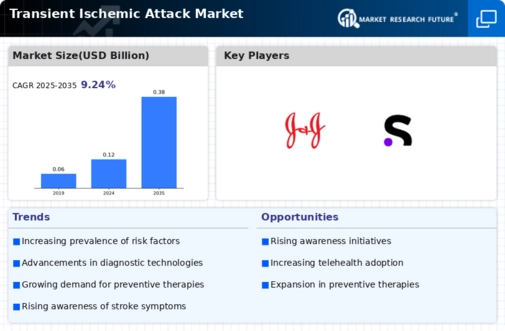
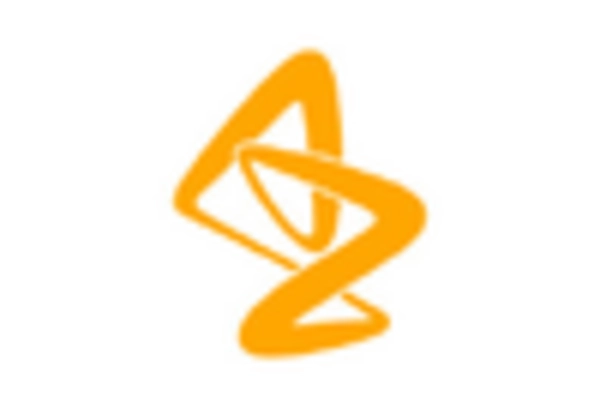
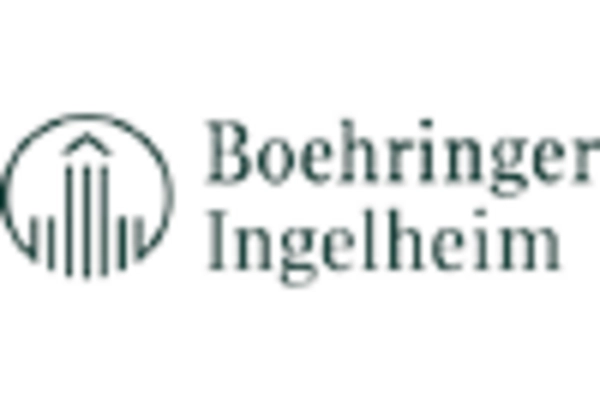

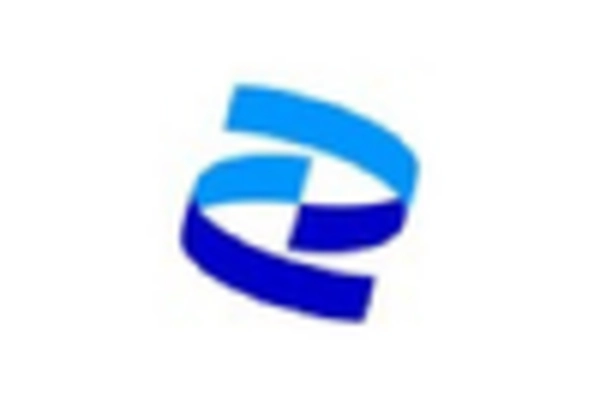
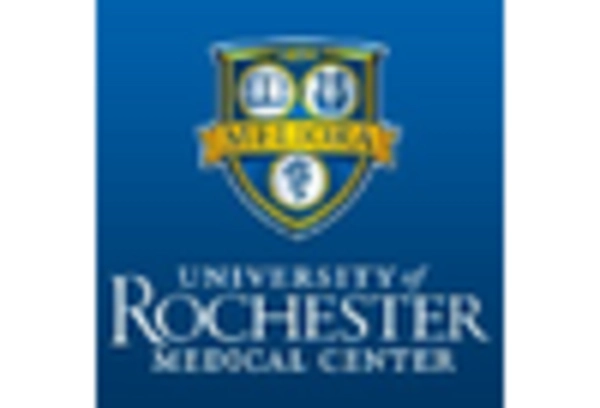
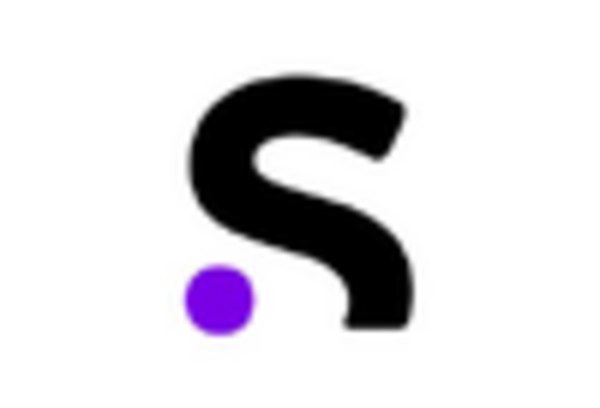









Leave a Comment